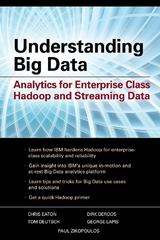Answered step by step
Verified Expert Solution
Question
1 Approved Answer
Assign 02 - Directions: * Complete the sorting algorithm functions that are given below. Note that it okay (and probably helpful) to define auxiliary/helper
| """ | ||
| Assign 02 - | ||
| Directions: | ||
| * Complete the sorting algorithm functions that are given below. Note that | ||
| it okay (and probably helpful) to define auxiliary/helper functions that | ||
| are called from the functions below. Refer to the README.md file for | ||
| additional info. | ||
| * NOTE: Remember to add a docstring for each function, and that a reasonable | ||
| coding style is followed (e.g. blank lines between functions). | ||
| Your program will not pass the tests if this is not done! | ||
| * Be sure that you implement your own sorting functions since. | ||
| No credit will be given if Python's built-in sort function is used. | ||
| """ | ||
| import time | ||
| import random | ||
| from math import ceil, log10 | ||
| def mergeSort(a_list, split_by_k=2): | ||
| start_time = time.time() | ||
| # INSERT YOUR MERGE SORT CODE HERE... | ||
| # BEING SURE TO USE split_by_k TO DETERMINE HOW SPLITS ARE MADE | ||
| elapsed_time = time.time() - start_time | ||
| return (a_list, elapsed_time) | ||
| def quickSort(a_list, pivot='first'): | ||
| start_time = time.time() | ||
| # INSERT YOUR QUICK SORT CODE HERE... | ||
| # * USING FIRST ITEM IN THE LIST AS THE PIVOT WHEN pivot == 'first' | ||
| # * USING MIDDLE ITEM IN THE LIST AS THE PIVOT WHEN pivot == 'middle' | ||
| # * USING FIRST ITEM IF A STRING OTHER 'first' OR 'middle' IS USED | ||
| # AND BE SURE THAT CONTINUES FOR SUBSEQUENT/RECURSIVE CALLS AS WELL | ||
| elapsed_time = time.time() - start_time | ||
| return (a_list, elapsed_time) | ||
| def radixSort(a_list): | ||
| start_time = time.time() | ||
| max_num_digits = ceil(log10(max(a_list) + 1)) | ||
| # INSERT YOUR RADIX SORT CODE HERE | ||
| elapsed_time = time.time() - start_time | ||
| return (a_list, elapsed_time) | ||
| def assign02_main(): | ||
| """ A 'main' function to be run when our program is run standalone """ | ||
| list1 = list(range(5000)) | ||
| random.seed(1) | ||
| random.shuffle(list1) | ||
| # list1 = [54, 26, 93, 17, 77, 31, 44, 55, 20] # helpful for early testing | ||
| # run sorting functions | ||
| bubbleRes = bubbleSort(list(list1)) | ||
| mergeRes2 = mergeSort(list(list1), split_by_k=2) | ||
| mergeRes3 = mergeSort(list(list1), split_by_k=3) | ||
| quickResA = quickSort(list(list1), pivot='first') | ||
| quickResB = quickSort(list(list1), pivot='middle') | ||
| radixRes = radixSort(list(list1)) | ||
| # Print results | ||
| print(f" list1 results (randomly shuffled w/ size = {len(list1)})") | ||
| print(list1[:10]) | ||
| print(f" bubbleSort time: {bubbleRes[1]:.4f} sec") | ||
| print(bubbleRes[0][:10]) | ||
| print(f" mergeSort2 time: {mergeRes2[1]:.4f} sec") | ||
| print(mergeRes2[0][:10]) | ||
| print(f" mergeSort3 time: {mergeRes3[1]:.4f} sec") | ||
| print(mergeRes3[0][:10]) | ||
| print(f" quickSortA time: {quickResA[1]:.4f} sec") | ||
| print(quickResA[0][:10]) | ||
| print(f" quickSortB time: {quickResB[1]:.4f} sec") | ||
| print(quickResB[0][:10]) | ||
| print(f" radixSort time: {radixRes[1]:.4f} sec") | ||
| print(radixRes[0][:10]) | ||
| # Try with a list sorted in reverse order (worst case for quicksort) | ||
| list2 = list(range(6000, 1000, -1)) | ||
| # run sorting functions | ||
| bubbleRes = bubbleSort(list(list2)) | ||
| mergeRes2 = mergeSort(list(list2), split_by_k=2) | ||
| mergeRes3 = mergeSort(list(list2), split_by_k=3) | ||
| quickResA = quickSort(list(list2), pivot='first') | ||
| quickResB = quickSort(list(list2), pivot='middle') | ||
| radixRes = radixSort(list(list2)) | ||
| # Print results | ||
| print(f" list2 results (sorted in reverse w/ size = {len(list2)})") | ||
| print(list2[:10]) | ||
| print(f" bubbleSort time: {bubbleRes[1]:.4f} sec") | ||
| print(bubbleRes[0][:10]) | ||
| print(f" mergeSort2 time: {mergeRes2[1]:.4f} sec") | ||
| print(mergeRes2[0][:10]) | ||
| print(f" mergeSort3 time: {mergeRes3[1]:.4f} sec") | ||
| print(mergeRes3[0][:10]) | ||
| print(f" quickSortA time: {quickResA[1]:.4f} sec") | ||
| print(quickResA[0][:10]) | ||
| print(f" quickSortB time: {quickResB[1]:.4f} sec") | ||
| print(quickResB[0][:10]) | ||
| print(f" radixSort time: {radixRes[1]:.4f} sec") | ||
| print(radixRes[0][:10]) | ||
| # Check if the program is being run directly (i.e. not being imported) | ||
| if __name__ == '__main__': | ||
| assign02_main() |
Step by Step Solution
There are 3 Steps involved in it
Step: 1

Get Instant Access to Expert-Tailored Solutions
See step-by-step solutions with expert insights and AI powered tools for academic success
Step: 2

Step: 3

Ace Your Homework with AI
Get the answers you need in no time with our AI-driven, step-by-step assistance
Get Started


